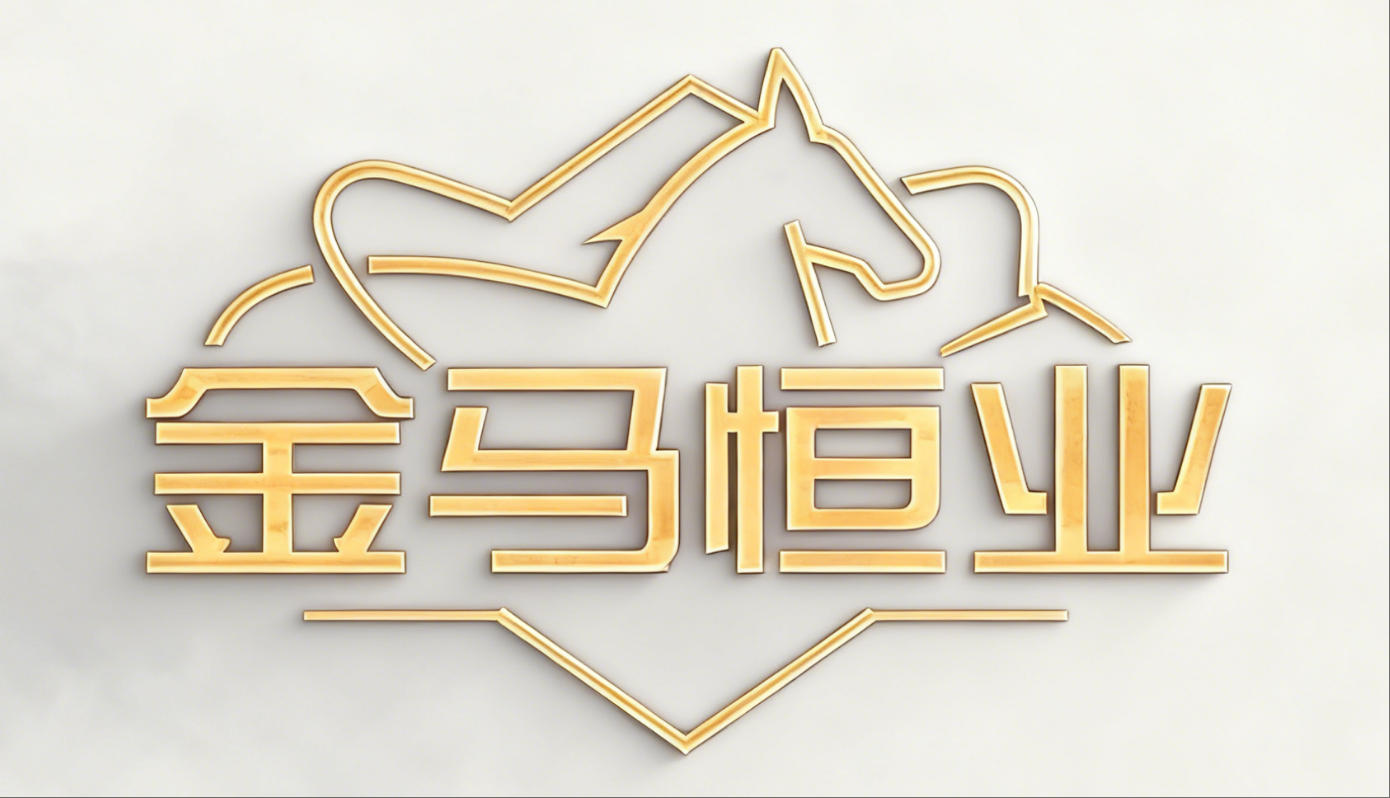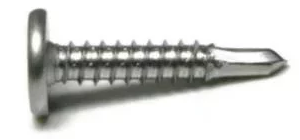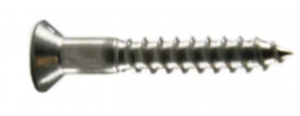News
Lets know more about these types of screws.
Screws are a fastener variety that is widely used every day. They come in many shapes and sizes and all have different uses depending on the type of screw. The word screw and bolt are often used interchangeably. You will often see smaller fasteners called screws and as they get bigger they are referred to as bolts. Generally, the term screw defines any fastener that after being installed into the material holds itself into that material. A bolt is used to bolt two materials together by going through the materials and being fastened with a nut, creating a bolted joint. Consider that a machine screw needs a nut or a pre-tapped hole to install.
Screw Terminology
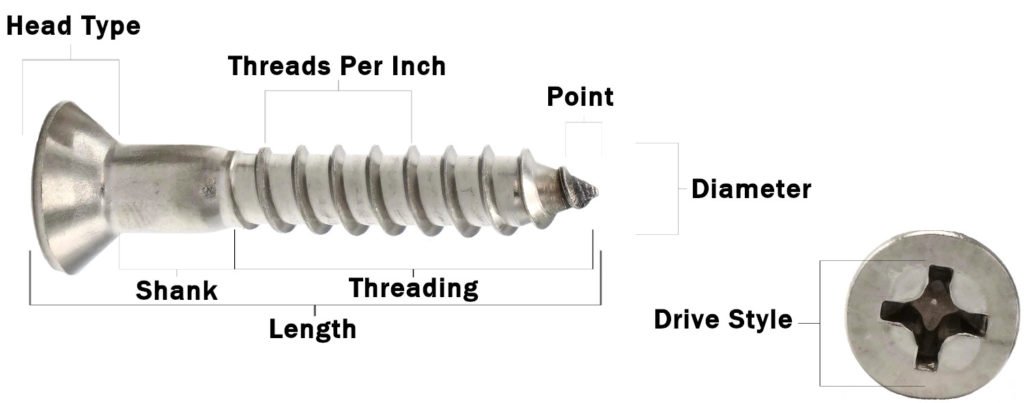
Material
The material that a screw is made out of. Often chosen based on environmental and structural needs.
Grade
Different compositions of a material that can change it’s qualities, making it a better choice based on environmental and structural needs.
Diameter
The thickness of the over-all screw. Determines the size of the hole that needs to be drilled into the materials.
Length
How long a screw is. This measurement can vary depending on the head style of the screw.(See Helpful Resource #2)
Threads Per Inch (TPI)
Amount of thread peaks measured from peak to peak in an inch length of the fastener. Used to measure threading for imperial fasteners.
Thread Pitch
Distance between two thread peaks. Used to measure threading for metric fasteners.
Drive Style
Indicates the type of driver to be used for optimal results. For example: A Phillips head indicates a Phillips driver should be used.
Head Type
The top portion of the screw and contains the drive style. Screws have different head types based on the application they are being used for. Some make the screw flush with the installation surface while others leave the screw head exposed for a quality finish.
Shank
Refers to an unthreaded portion under the head of several types of screws. This can vary based on the length, diameter and type of the screw. The shank aids in compression and clamping force of the installaton materials, as well as, reducing the chance of breaking due to over-heating.(See Helpful Resource #1)
Threading
The portion of the fastener that has a helical shape rolled into it. Causes the screw to pull into the material and hold in place.
Point
The very tip of a screw. Depending on the type of screw, a variety of points can be available. For example: Drill Point, TEK Points.
*Note: A drive style usually has several different sizes as well. Usually indicated by a number for example: Phillips #2
Measuring Screws
Screws are measured in diameter by length. An example of an imperial screw measurement would be a #7 x 1″ deck screw. The #7 is the pre-defined diameter of the screw and the 1″ is the length of the screw. Imperial diameters range from 0 to 24 and their lengths are measured in inches. When measuring a metric screw, you use the same format of diameter by length, but both are measured using millimeters. For example, an M5 x 10M means a diameter of 5mm and a length of 10mm. It is not uncommon when dealing with screws to see the thread pitch added in as well.
| Imperial | Metric |
| 1/4″-20 x 1″ | M5 x .8 x 10M |
As seen above, the thread pitch is added into the middle. For imperial the 20 stands for 20 threads per inch whereas with the metric the .8 stands for .8 threads per millimeter. It is common practice to leave out the thread pitch on screws during the listing process as the pitch matters less because it does not have to match a nut. When measuring the length of screws, the head of the screw will matter. For most screw types you measure from the bottom of the head to the tip. An exception to this rule is a flat head. Always measure flat head screws from the top of the head to the point.
Screw Installation
Installing screws is a simple process. Using either a screwdriver or drill/driver with the appropriate driver bit, place even pressure on the drive recess and being spinning it. The way you will need to spin depends on the orientation of the screw threads although most are right-hand threaded (meaning spin to the right). Some screws have self-drilling points which are essentially a notched tip that allows a screw to drill into the material as it is being installed. Wood screws should always have a hole pre-drilled before installing them. Pre-drilling into wood will prevent cracks and splintering from occurring especially when working with hardwood. Self-tapping screws have sharp cutting threads that will cut deeply into the material during installation for a more secure hold.
Types of Screws
Screws are all engineered for different purposes. It is best practice to use a wood screw for wood for example because it was designed to have the optimal hold in wood applications.
|
| Concrete ScrewsConcrete Screws are easily distinguished by their blue coating which protects them in harsh conditions. They cut threads into concrete and are used to secure materials to concrete, brick or block. |
|
| Deck ScrewsDeck screws feature a type 17 notched point for removing chips of wood to make it easy to install in wood and composite deck materials. |
|
| Lag ScrewsLag screws, commonly called lag bolts, are large wood screws with threading that extends all the way up the shaft. |
|
| Self-Drilling ScrewsSelf-drilling screws are screws with a self-drilling (TEK) point to pierce through 20 to 14-gauge metals. The higher the TEK number, the larger the drill point to pierce heavier gauge metals. |
|
| Sheet Metal ScrewsSheet metal screws have sharp cutting threads that cut into sheet metal, plastic or wood. They have a fully threaded shank and sometimes have a notched point at the tip to aid in chip removal during thread cutting. |
|
| Wood ScrewsWood screws are partially threaded with large cutting threads and a smooth shank. They are designed to slide through the top piece of wood and tightly pull all boards together. A Deck Screw is a variety of a wood screw. |
Screw Drive Styles
There are many screw drive styles available depending on the type of screw being installed. The four most popular styles for screws are the following:
 | SLOTTEDA straight line cut into the center of the head. |
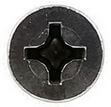 | PHILLIPSThe most common drive style. Shaped like a cross. |
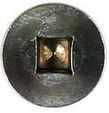 | SQUAREA square shape, resists stripping out. |
 | TORX / STAR / 6 LOBETorx drive, also known as star drive, is considered the least likely to strip during a proper installation and provides a more decorative drive finish. |
There are many other head types including internal hex (Allen Driven) and other more specialty heads called security heads which include spanner, Torx with pin, Philips with pin, and many more.
Screw Heads
Screw heads serve different purposes, a flat head is used to countersink the screw so nothing remains exposed. While others have more decorative or functional properties. There are many common heads on screws and each usually serves a different purpose depending on the application. Listed below are the common head types found on screws and their functions.
 | Bugle HeadA Bugle Head is similar to a flat head with a rounded section that will pull down drywall instead of cutting through it as it is fastened. |
 | Button HeadA button head is a rounded head, used primarily in socket cap screws. This head sits above the installation surface. |
 | Button FlangeThe button flange head is similar to the regular button head style but with a flange or integrated washer to increase surface area during an installation. |
 | Fillister HeadA head with a higher profile than other head styles. |
 | External Hex HeadThis head is designed to be driven by a wrench and allows for high torque installations. The head of all lag screws. |
 | Hex Washer HeadA head that is designed to be driven by a wrench with an integrated washer or flange to increase the installation surface area. A common head for driving concrete screws due to its stronger installation points. |
 | No HeadExclusive to the socket set screw, lacks a head and has an internal drive in the body of the screw itself. |
 | Flat HeadA flat head is designed to be drilled into a material until it sits flush with the installation surface. |
 | Oval HeadSimilar underside to that of a flat head screw but with a decorative rounded top. Commonly used as a finish screw in visible applications. |
 | Pan HeadA screw with a rounded head (less so than a button or round head) and a flat bottom designed to sit directly on the installation surface. |
 | Pancake HeadA flat topped head with a wide head to sit close to flush but also have a large surface area on the installation material for grip. |
 | Round HeadA completely rounded head that was very popular but has become less so with the variety of heads now available. |
 | Truss HeadWith a wider installation surface area, this style is used where a lower profile is desired but a strong grip is needed. |
 | Modified Truss HeadSimilar to the truss head but with an integrated washer which increases the surface area of the head even more. |
Screw Threading
Screws have both coarse and fine threading options available. Both have a place when it comes to choosing screws. Coarse thread screws tend to have a larger pitch and size relative to the diameter. This thicker threading provides more retention and gripping power (resistance to pull-out). Fine thread screws have thinner more frequent threading which prevents these screws from vibrating loose accidentally. Fine thread screws are also considered to be significantly more delicate than coarse threaded screws.
Downside Of Screws
Screws are an excellent fastener to use for a wide variety of projects but have a couple of downsides.
Shear Strength – Screws have a relatively weak shear strength. If the application will be under shear forces, bolts or nails should be used instead.
Hold – Sometimes screws loosen and it can be caused by a variety of factors.
Temperature Change which causes the material to expand and contract resulting in a less firm hold.
Vibrations cause loosening in most fasteners over-time by rotating them out of their installation.
Varying Weight fluctuations in load can cause screws to loosen as well by warping the material and screws themselves.
【 Go Back 】 | 【 Print 】 | 【 Close this window 】
